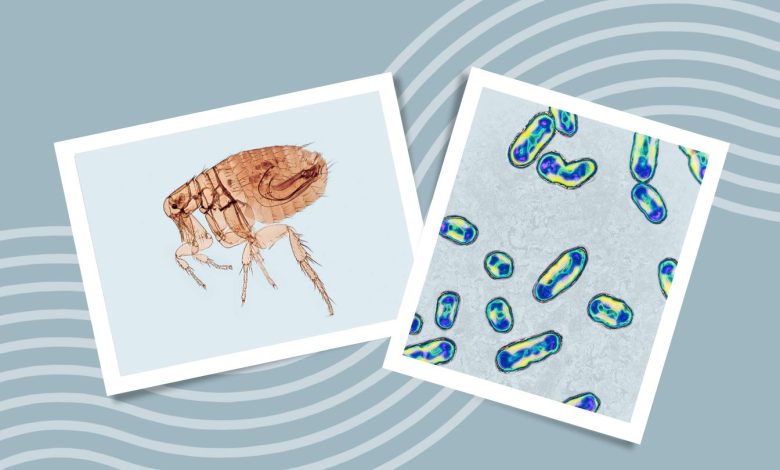Bubonic Plague Case in Oregon Raises Alarm

[ad_1]
A pet owner in Oregon has been diagnosed with bubonic plague, a bacterial infection that can be deadly in humans if left untreated. It is the first case of the disease in the state since 2015.
Public health officials in Deschutes County suspect that the resident, whom they did not identify, contracted the infection from their symptomatic cat. The disease is mainly spread by fleas traveling on rodents, but pets may bring plague-infected fleas into the home or transmit the illness through bites and scratches if they are infected, according to the Oregon Public Health Department.
“The plague normally exists in the animal population — often in rodents but other mammals as well, such as prairie dogs, rabbits, and occasionally dogs and cats,” says infectious disease specialist Jonathan Grein, MD, director of hospital epidemiology at Cedars-Sinai Medical Center in Los Angeles. “Occasionally, we see that illness spill over and cause a human infection.”
Figures from the Centers for Disease Control and Prevention (CDC) show that incidents of bubonic plague in the United States are infrequent, with an average of seven human cases reported annually. The disease is most common in rural and semirural areas of the western United States, per the CDC.
In the recent Oregon case, the infected person was treated in the earlier stages of the disease. State health officials say that the incident “poses little risk to the community,” and no other cases have been identified.
“Plague is actually not something you hear about very often, but if we do get a case, it tends to be widely reported because of the notorious outbreak in the Middle Ages,” says William Schaffner, MD, professor of preventive medicine in the department of health policy at the Vanderbilt University School of Medicine in Nashville, Tennessee.
Bubonic Plague Symptoms Include Swollen Lymph Nodes Called Buboes
During the 14th century, the bubonic plague, known as the Black Death, killed more than one-third of Europeans, or 25 million people. In a history of the plague published in 2021, researchers wrote that those afflicted “died quickly and horribly from an unseen menace,” with high fevers and painfully swollen lymph nodes called buboes (hence the name bubonic).
People who get the disease today may experience these miserable symptoms along with headache, chills, muscle aches, nauseas, and weakness.
Early Plague Diagnosis Can Prevent Infection From Turning Deadly
If not diagnosed early, bubonic plague can progress to septicemic plague (bloodstream infection) or pneumonic plague (lung infection), or both. These forms of plague are more severe and difficult to treat. With pneumonic plague, the bacteria can more easily spread from person to person as the bacteria may be suspended in respiratory droplets and then dispersed in the air through coughing or sneezing.
In some cases, the infection can be fatal. The Colorado Department of Public Health and Environment reported that a 10-year-old girl died from causes associated with plague in the summer of 2021.
What to Do if You Have Plague Symptoms
Dr. Grein advises people to see a doctor as soon as possible if they have plague symptoms, especially if they live in an area that has issued public health advisories about the plague.
A flea bite or the presence of a bubo may help a doctor consider plague as a cause of illness.
“Your doctor can help evaluate the symptoms,” he says. “The plague bacteria [Yersinia pestis] is easily identified with traditional lab techniques, and different types of antibiotics are available that can effectively treat the infection.”
The CDC recommends that antibiotics (such as gentamicin and fluoroquinolones) be administered as soon as plague is suspected.
Pet Owners Especially Urged to Take Steps to Prevent Plague
To avoid getting the plague, the Oregon Health Authority advises the public to be extra cautious if they live in areas where rodents are abundant and if they have pets that go outdoors.
Following these tips can help protect against plague:
- Avoid all contact with rodents, and never touch dead, sick, or injured rodents. This includes squirrels, chipmunks, prairie dogs, mice, voles, and rats.
- Don’t let pets approach sick or dead rodents, explore rodent burrows, or hunt rodents.
- Take steps to prevent pets from contracting fleas, as described by the CDC.
- Keep wild rodents away from homes by removing any food sources, woodpiles, and other attractants.
- Don’t camp, sleep, or rest in areas where rodents (alive or dead) are observed.
- Wear long pants tucked into boot tops and apply insect repellent to socks and trouser cuffs to help reduce exposure to fleas.
The Colorado Department of Public Health and Environment further warns that if you notice a decrease in rodent activity in an area where you normally see active rodents, that could be a sign that plague is present, and you may want to contact your local public health agency.
“Because we live in a much cleaner, hygienic environment than in the Middle Ages, and we have effective antibiotics and supportive care, bubonic plague is not the widespread problem that it once was,” says Dr. Schaffner, who is also a spokesperson for the National Foundation for Infectious Diseases. (The last urban plague epidemic in the United States occurred in Los Angeles from 1924 through 1925.) “Unless you live in an area that has a local health warning about the plague, I don’t think you have to be very worried about it.”
[ad_2]




